Introduction
For many businesses, the choice between cash and accrual accounting can significantly impact financial reporting accuracy and strategic decision-making. Cash accounting, which records transactions only when cash is exchanged, offers simplicity but can fall short for companies with complex financial activities. On the other hand, accrual accounting, which recognizes revenue when earned and expenses when incurred, provides a more precise reflection of a company's financial health, aligning income and expenses to the correct periods.
This method is particularly beneficial—and often mandatory—for larger businesses and those dealing with physical goods or credit transactions. This article delves into the reasons for converting from cash to accrual accounting, evaluates current accounting records, outlines the conversion process, and addresses common challenges, offering a comprehensive guide for CFOs aiming to enhance financial transparency and strategic planning.
Understanding Cash and Accrual Accounting
Cash-based bookkeeping tracks income and costs only when money is exchanged, making it easier but possibly less precise for companies with complicated transactions. On the other hand, the method acknowledges income when it is earned and costs when they arise, offering a more transparent view of economic well-being by matching earnings with associated costs. This method is mandatory for publicly traded companies and those with over $25 million in annual revenue to comply with GAAP. Companies handling tangible goods or providing credit gain advantages from the method of recording revenue as it avoids distorted financial information caused by postponed payments, guaranteeing precise and prompt financial reporting. For example, businesses utilizing the method of recognizing income and expenditures can more effectively handle revenue and costs over various months and quarters, which is essential for strategic decision-making. On the other hand, small, cash-based service businesses might prefer cash management due to its simplicity and lower costs. However, as businesses expand, shifting to a system of record-keeping can prevent complications in the future, making it a favored option for long-term strategic planning.
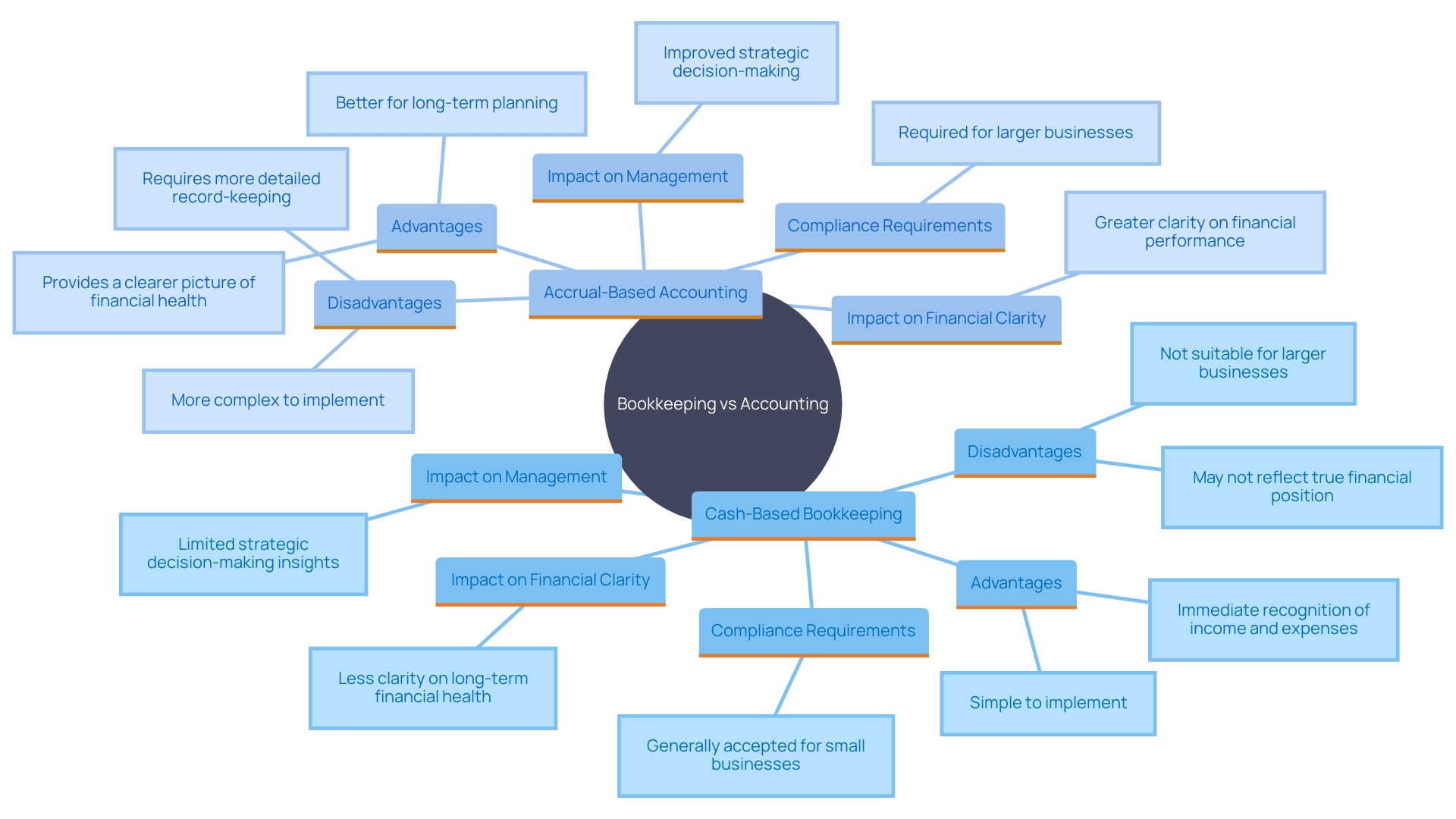
Why Convert from Cash to Accrual Accounting?
Transitioning to an accrual-based system provides a thorough perspective of a business's monetary condition by aligning income and costs with the time frames they relate to. This approach offers clarity to stakeholders and improves the precision of forecasting and planning. According to SEC Chief Accountant Paul Munter, the statement of cash flows is often restated due to prior period errors, underscoring the need for diligent preparation and review. By providing an accurate view of economic stability, revenue recognition assists enterprises, particularly those with slim profit margins such as the hospitality sector, in making knowledgeable choices regarding pay and investments. 'The financial software market, projected to reach $70.2 billion by 2030, supports the growing need for robust management tools that facilitate this transition.'.
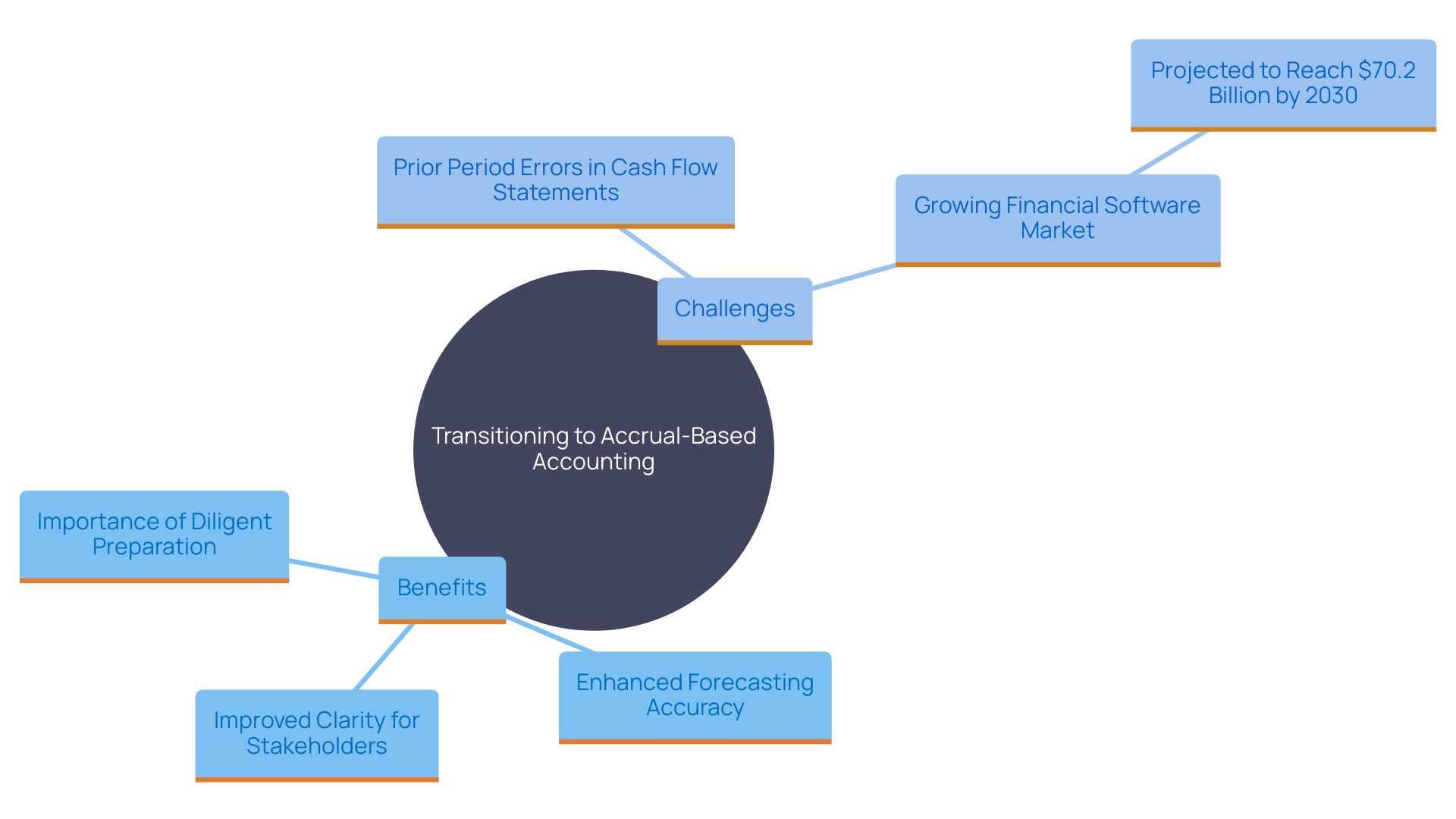
Evaluating Your Current Accounting Records
Before moving to the method of recording revenues and expenses when they are earned or incurred, it's vital to carefully examine your existing financial records. Begin by recognizing all cash dealings, pending invoices, and any unregistered costs. This comprehensive evaluation will highlight the necessary adjustments for a smooth switch to accrual financial reporting. Accrual accounting aligns revenues and expenses with the periods they occur, providing a more precise economic picture, especially for businesses that sell products or offer credit. This method ensures that monetary data isn't skewed by payment delays, offering a clearer view of profitability and economic health.
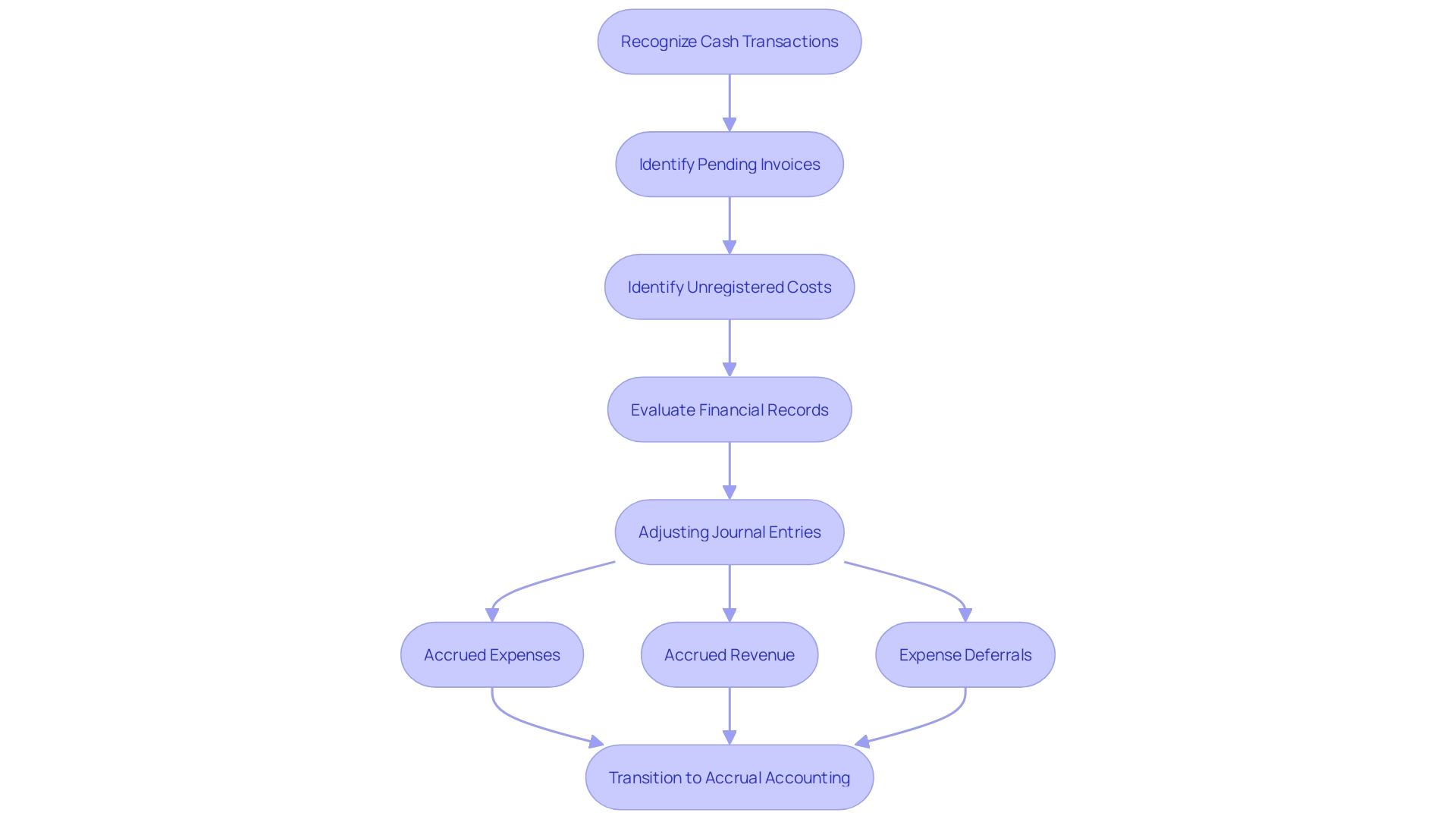
Steps for Cash to Accrual Conversion
-
Begin by preparing a trial balance of your cash transactions to ensure all entries are accurate and complete. This foundational step is crucial for identifying discrepancies early on.
-
Identify outstanding accounts receivable and accounts payable. These elements are essential in understanding your current monetary obligations and the revenues yet to be collected.
-
Adjust your revenue to include all earned income, regardless of whether cash has been received. This step ensures that your monetary statements reflect the true performance of your business.
-
Record all incurred expenses that have not yet been paid. This adjustment is essential to provide a realistic perspective of your company's obligations and overall economic health.
-
Revise your monetary statements to incorporate these adjustments. Precise and current accounting statements offer valuable insights for strategic decision-making and budgeting.
Adjusting Revenue: Accounts Receivable
When transitioning to accrual accounting, it is essential to record all earned but unbilled revenue as accounts receivable. This encompasses services rendered or products delivered that have not yet been invoiced. Documenting the expected payment timeline is crucial for accurate forecasting. An efficient approach to this process can significantly enhance monetary reporting and forecasting accuracy. For instance, a survey revealed that nearly 50% of late payments stem from inefficient billing practices. Therefore, adopting streamlined systems not only aids in proper revenue recognition but also prevents cash flow disruptions. Additionally, ensuring that all transactions are documented accurately can mitigate the risk of uncollectible receivables, which currently stands at around 6% of the total value of receivables for many companies.
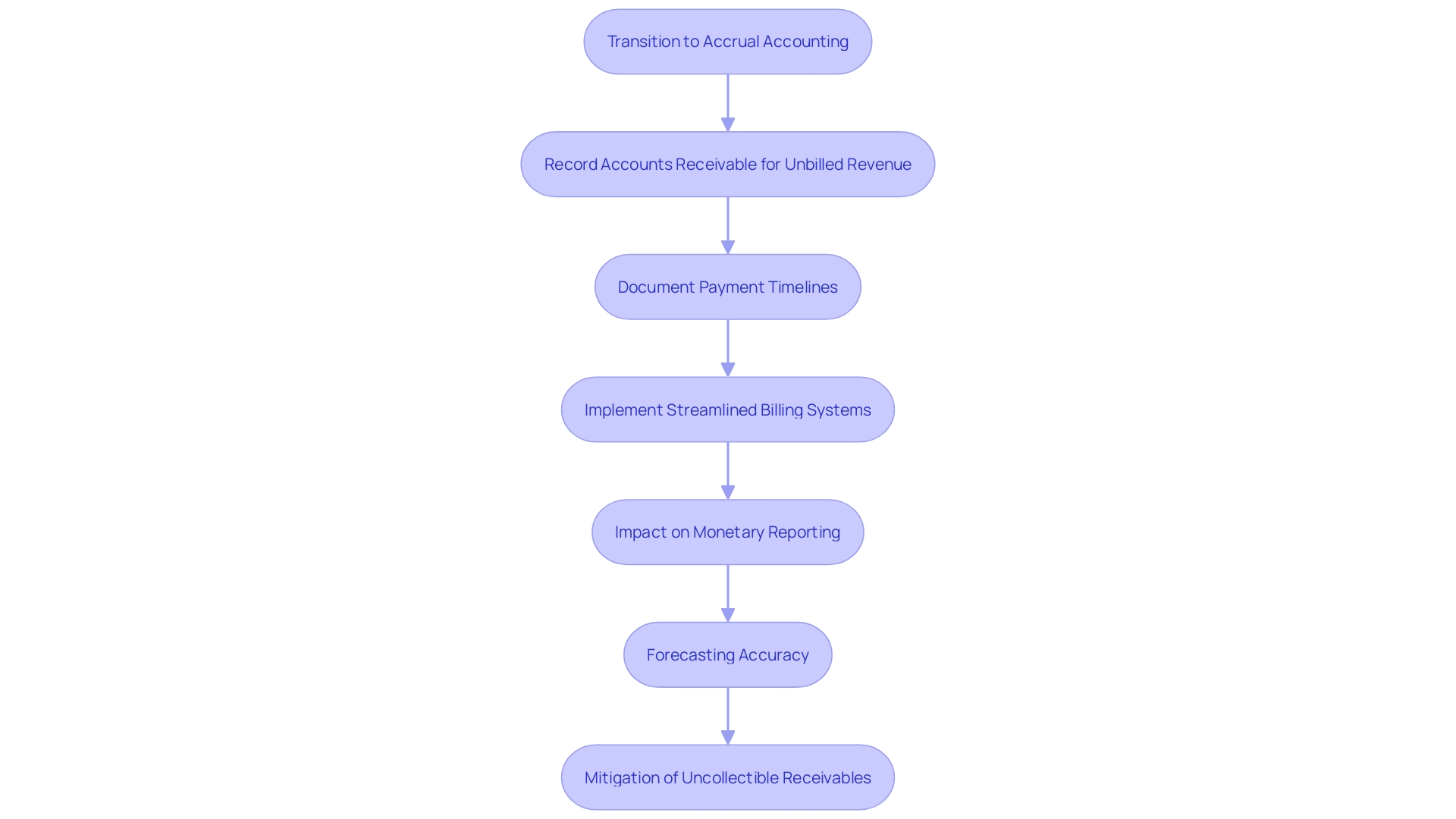
Adjusting Expenses: Accounts Payable and Accrued Liabilities
Effectively recording all costs that have been incurred but not yet settled is crucial for precise accounting. This encompasses bills that have been received but not yet settled, as well as any accrued liabilities. Classifying these costs accurately is essential. According to new research, nearly 40% of CFOs globally do not completely trust the accuracy of their organization's monetary data, highlighting the importance of meticulous expense tracking for strategic decision-making.
An accounts payable clerk plays a pivotal role in this process by managing vendor relationships and inquiries, resolving payment discrepancies, and ensuring timely processing of invoices. This contributes significantly to the overall economic health of a business by maintaining compliance with fiscal regulations and providing necessary data for monetary analysis. Efficient accounts payable processes are crucial in avoiding restatements, which are frequently associated with inadequate internal controls over reporting.
Moreover, staying updated on industry best practices and regulatory changes is vital. 'The IRS's recent decision to maintain stable interest rates for Q3 2024 underscores the need for businesses to stay informed about economic regulations affecting their planning and obligations.'.
In summary, accurate cost classification and efficient accounts payable management are essential to strong monetary reporting and strategic fiscal planning.
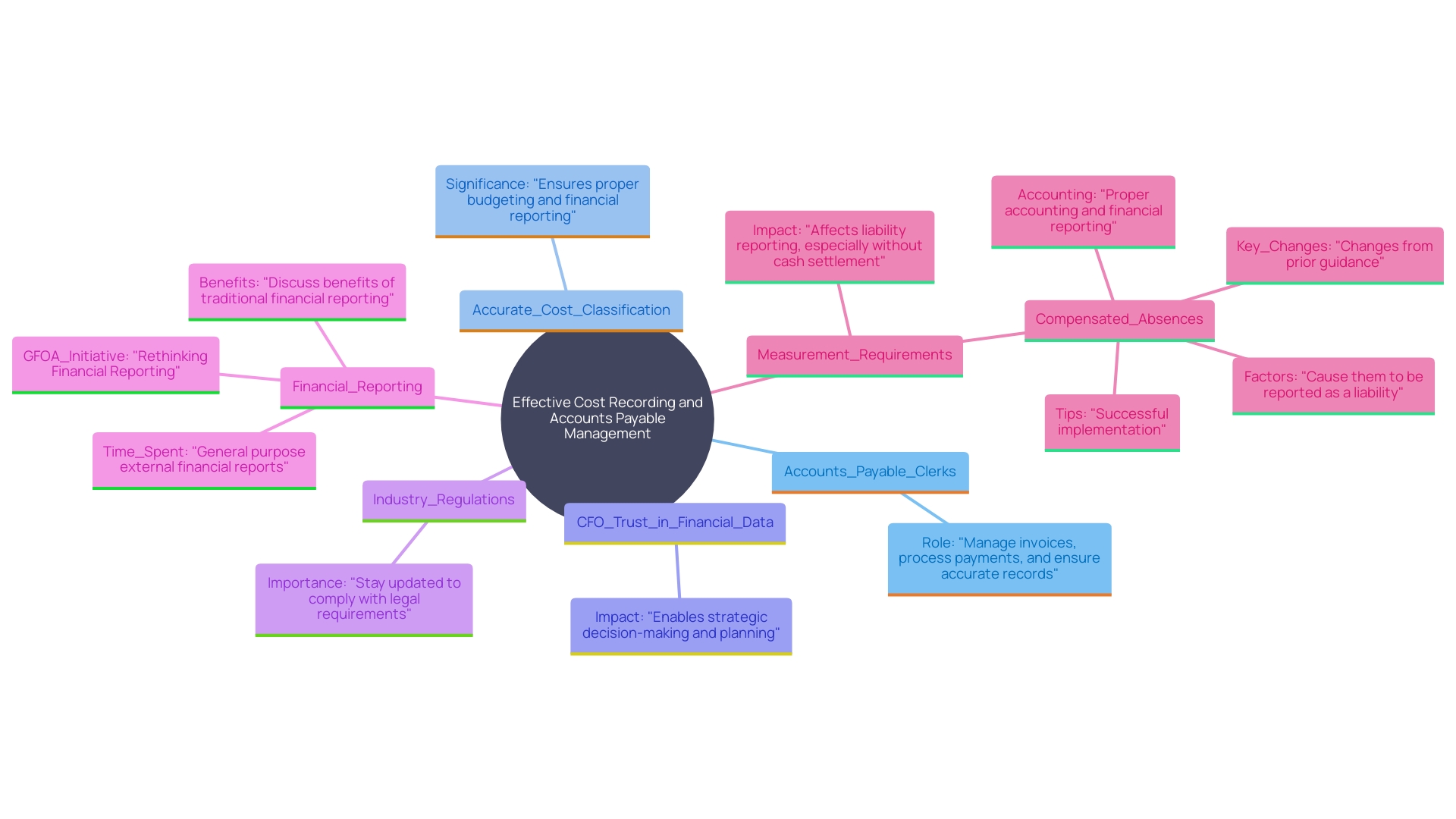
Handling Prepaid Expenses
For costs paid in advance, such as insurance or rent, it's essential to allocate these amounts over the periods they cover. This practice guarantees your monetary reports precisely indicate the costs in the pertinent accounting periods, following accrual accounting principles. Establishing a rigorous approval procedure and demanding appropriate paperwork, such as receipts or invoices, can further substantiate these costs, improving the precision of monetary reports. For instance, using corporate card programs can automate and streamline this process, ensuring transparency and reducing the risk of errors and fraud. This approach not only aligns with best practices for expense management but also supports smoother audits, ultimately fostering financial stability and compliance.
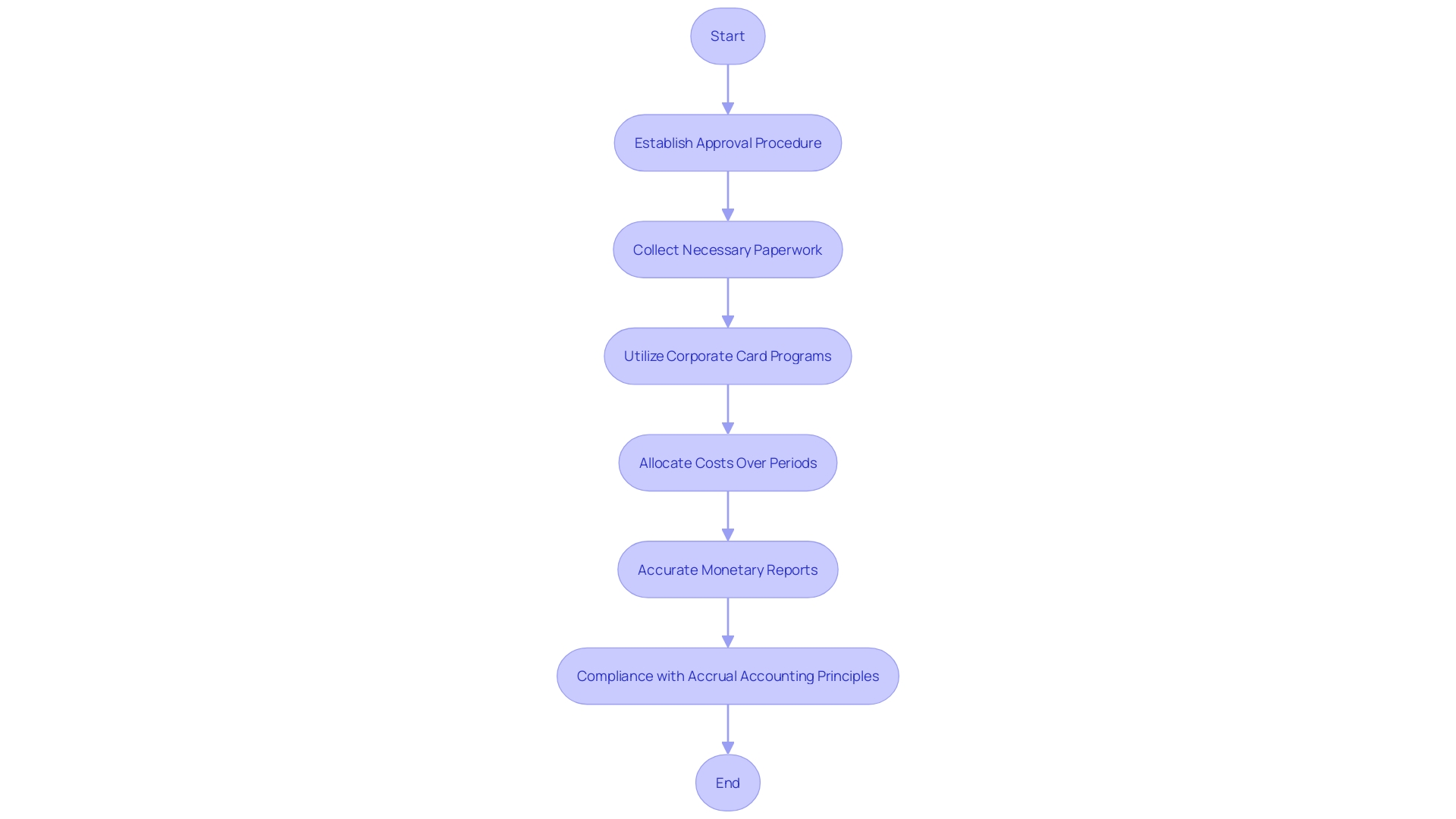
Filing with the IRS: Form 3115
To shift to the method of recognizing revenue when earned, companies must submit Form 3115 to the IRS. This form serves as the official notice to the IRS about the change and includes necessary details to ensure compliance. It’s crucial to adhere to the provided guidelines meticulously to avoid potential complications. Notably, all publicly traded companies and businesses with annual revenue exceeding $25 million are mandated to use the accrual accounting method to comply with GAAP standards. This method is particularly advantageous for companies dealing with physical products or services on credit, as it aligns revenues and expenses with the periods they were incurred, providing a more precise economic picture. This ensures that monetary data is not distorted by delayed payments.
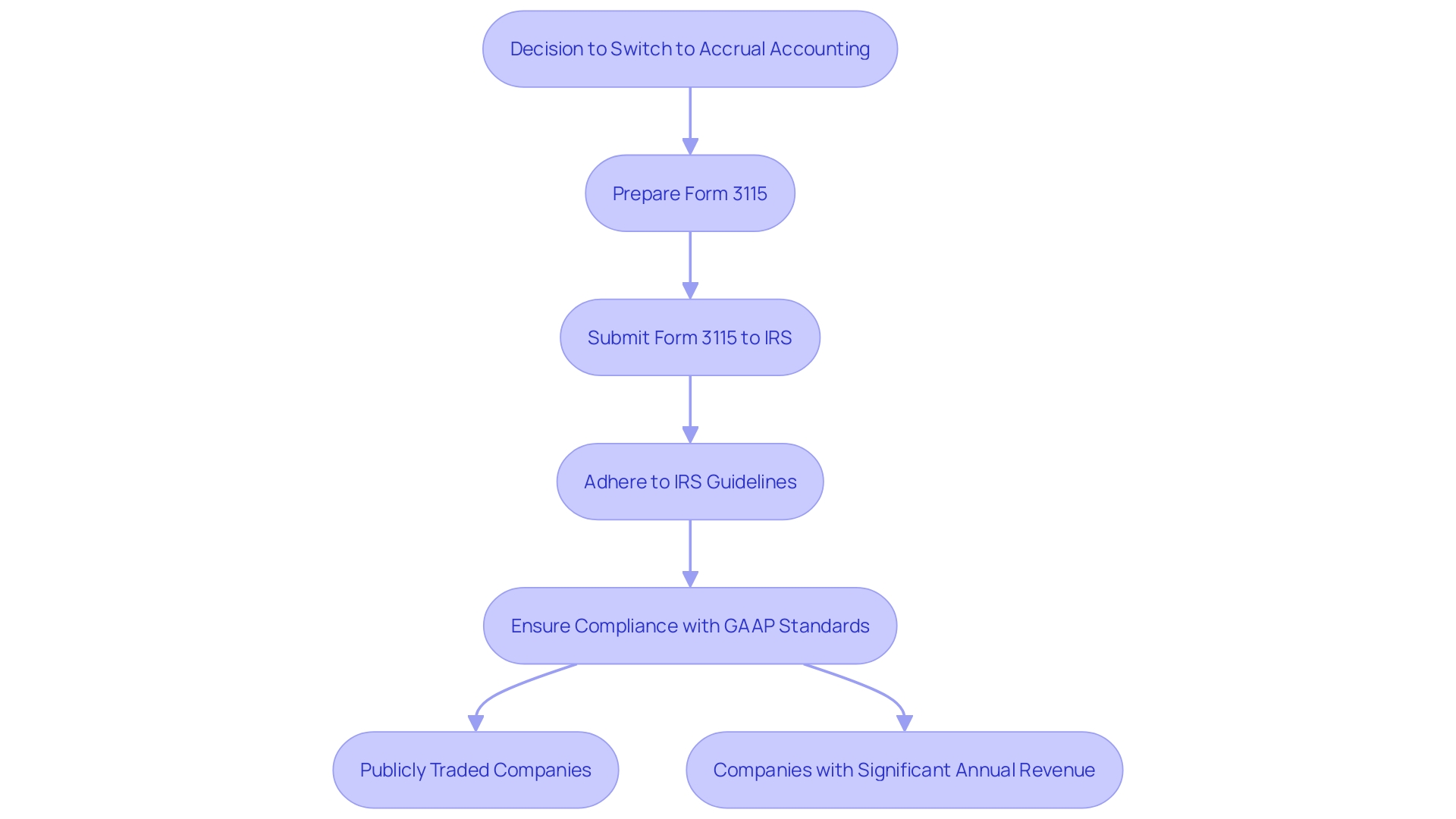
Common Challenges and Considerations
Anticipate potential challenges such as adapting to new reporting standards and managing cash flow during the transition from cash to accrual accounting. This shift can have significant implications for tax reporting, potentially altering your taxable income. According to SEC Chief Accountant Paul Munter, maintaining a rigorous approach to the statement of cash flows is critical as it has been a leading area of monetary restatements and material weaknesses. Collaborate with your monetary team to ensure a seamless transition. The SEC’s Office of the Advocate for Small Business Capital Formation emphasizes the importance of understanding financial statements for navigating complexities in financial operations. Their new resources on income statements and balance sheets underscore the need for accessible tools to aid small businesses and investors. Implementing efficient business processes and systems will help deliver high-quality services consistently and position your organization for long-term success.
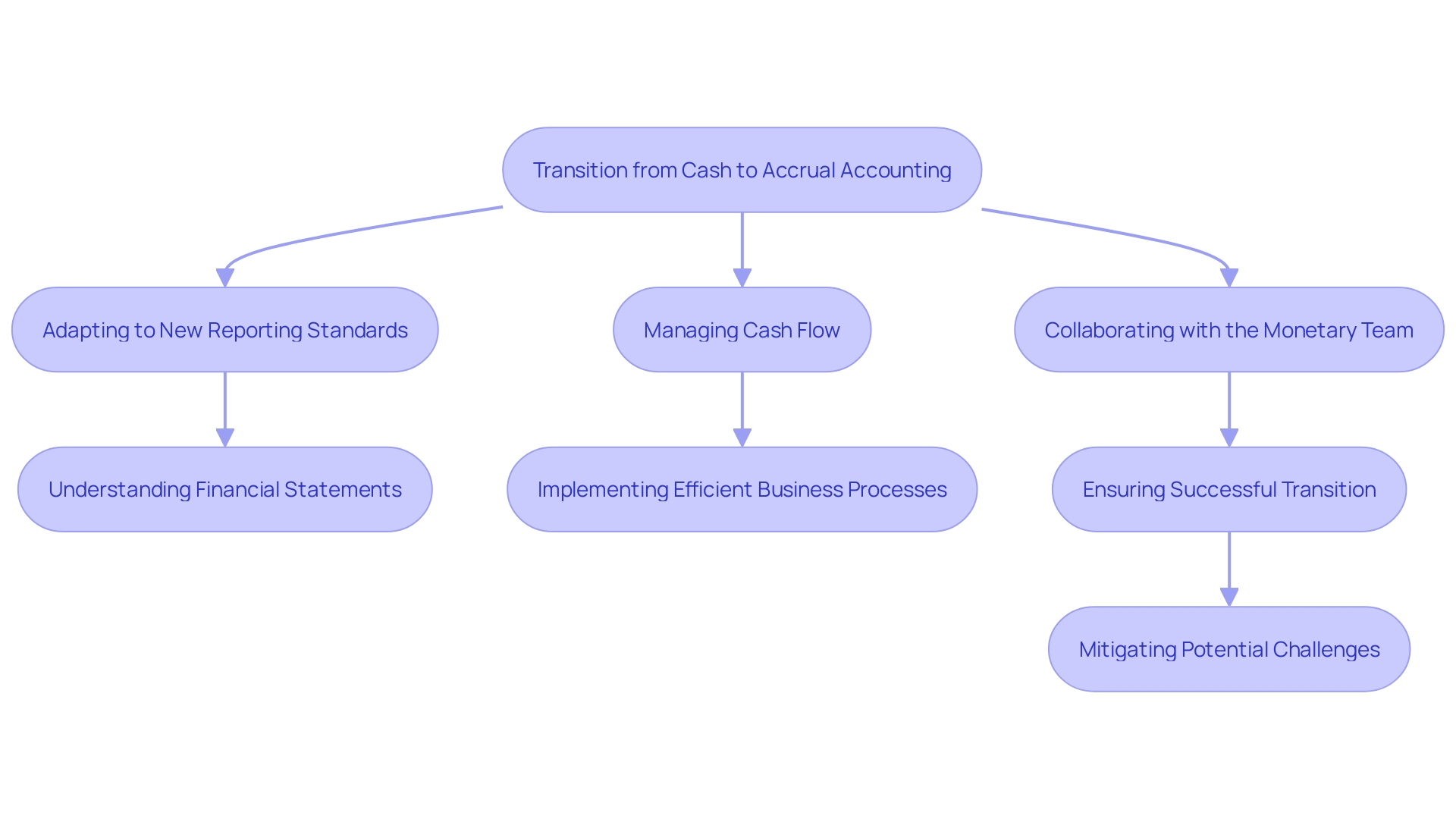
Conclusion
Transitioning from cash to accrual accounting represents a pivotal step for businesses aiming to enhance financial accuracy and strategic decision-making. By adopting accrual accounting, organizations gain a comprehensive view of their financial status, aligning revenues and expenses to the periods they pertain to. This method not only ensures compliance with regulatory standards but also provides stakeholders with transparent and reliable financial information.
The conversion process requires careful evaluation of current accounting records, meticulous adjustments to revenue and expenses, and a thorough understanding of accounts receivable and accounts payable. Implementing best practices in expense tracking and revenue recognition will further bolster financial reporting accuracy. The strategic benefits of accrual accounting extend beyond compliance; they empower businesses to make informed decisions that drive growth and profitability.
While challenges may arise during the transition, such as adapting to new reporting standards and managing cash flow, proactive engagement with financial teams and leveraging robust accounting software can facilitate a smooth conversion. By prioritizing this shift, companies position themselves for long-term success, ensuring their financial practices align with both current needs and future aspirations. Embracing accrual accounting is not just an operational change; it is a strategic move that enhances financial management and supports informed decision-making.




